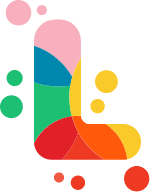Zimbabwe Form 1 Design and Technology Syllabus
This syllabus outlines the curriculum for Design and Technology for Form 1 students in Zimbabwe, focusing on practical skills, problem-solving, and creativity. It incorporates STEM principles and design processes to address local challenges and promote cultural and economic well-being.
1. Health and Safety
- Workshop Safety: Covers personal safety, workshop regulations, safe use of tools and basic machines, fire drills, first aid procedures, and waste disposal.
- First Aid: Introduces the contents of a first aid kit and basic first aid administration for common workshop injuries like cuts, burns, and electric shocks.
2. Product Design
- History of Design and Technology: Explores historical developments in design and technology, from indigenous inventions and architecture to the industrial revolution, and relates them to current practices.
- Introduction to the Design Process: Covers the design process cycle, including identifying needs and opportunities, formulating design specifications, generating ideas, developing solutions, realizing the design, testing, evaluating, and compiling design folios.
- Related Learning Areas and Careers: Discusses the relationship between Design and Technology and other learning areas, outlining potential career opportunities.
3. Material Science
- Types of Materials: Introduces various indigenous and modern materials, including plastics, wood, metals, composites, textiles, food, and clay, exploring their physical and working properties and different uses.
4. Systems and Control
- Design and Making: Focuses on designing and making systems, explaining related terms in mechanisms, structures, electronics, and services.
- Electronics: Introduces basic electronic components, circuits, and power sources, emphasizing correct symbols and conventions for circuit diagrams.
- Energy: Explores different energy sources (solar, hydro, wind, batteries, fuels) and related safety precautions. Students design and make a product powered by at least one energy source.
5. Engineering Science
- Engineering Calculations: Covers unit conversions (length, mass, volume) and calculations of material quantities for projects, introducing the concept of a bill of quantities. Also includes basic calculations involving moments of forces.
6. Tools and Equipment
- Classification and Uses of Tools: Introduces the classification and use of basic tools, including measuring and marking out tools, holding and supporting tools, and precision and impelling tools.
7. Manufacturing
- Manufacturing Processes: Introduces various manufacturing processes such as casting, molding, forming, machining, fabrication, spinning, weaving, and shaping.
8. Design Drawings
- Drawing Principles: Covers basic drawing conventions, including types of lines, tone, color, texture, patterns, lettering, freehand sketching, and computer sketching.
- Geometrical Constructions: Introduces the construction of basic geometric shapes like angles, triangles, quadrilaterals, and circles using different drawing tools and equipment.
9. Enterprise Skills
- Environment and Social Responsibility: Emphasizes sustainable material selection and explores different energy sources, covering topics like deforestation, reforestation, and recycling.
- Aesthetics: Focuses on applying appropriate finishes to products and selecting suitable materials for product manufacture, considering the appearance of materials and different finishes.
Assessment
Assessment includes continuous assessment (60%) through timed tests and a design project (50%), and a summative written examination (40%). The design project component spans Forms 1-4, with increasing weighting in later forms. The written examination covers design processes, systems control, material science, engineering science, and design drawing. |

